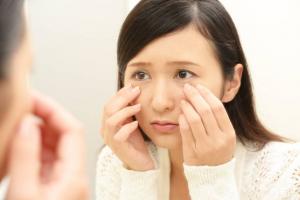Mirror, Mirror on the Wall…You Are the Ugliest of All Says Body Dysmorphic Disorder (BDD)
Mirror, Mirror on the Wall…You Are the Ugliest of All Says Body Dysmorphic Disorder (BDD)

Peggy, an attorney in her late 30s, establishes rituals to protect herself from aging and in her mind, becoming ugly. These rituals include 20 to 30 facial wraps a day, washing her face 40 times from morning until night, applying her cosmetics in a ritualized order, and constantly standing in front of mirrors to scrutinize the symmetry of her legs. These rituals last 8 hours a day every single day and cost over $10,000 a month to maintain.
Over the course of her life, Peggy has had over 20 car accidents as she has been so distracted checking her face for wrinkles in her rearview mirror. She has had 17 reconstructive surgeries and over 25 facial corrections. Peggy is so self-absorbed and obsessed with her appearance that she cannot maintain any type of relationship for more than one month at a time.
This is the story of “imagined ugliness” where a person hyper-focuses on a flaw in appearance and will go to extreme, often dangerous lengths, to “fix” the flaw. This is the story of a person suffering from body dysmorphic disorder, or BDD.
BDD is a serious, debilitating disease that afflicts approximately 1-2% of the general population, which is about 5 million people. This illness has existed throughout the ages and has been documented all the way back to the medieval times. Ironically, the patients I have seen with BDD were above average in their looks. They are high in delusion and impulsivity but low in insight.
BDD is characterized by obsessions, or preoccupations, of one or more self-perceived flaws, or defects, in appearance. Usually, the “defect” is minimal or practically invisible to the naked eye. However, according to some research studies, compared to individuals without BDD, individuals with BDD have abnormal visual processing. Thus, their flaws are magnified 100 times, and it is all they ever focus on.
Common Obsessions:
- Nose
- Skin
- Hair
- Chin
- Ears
- Penile size and muscle tone (in males)
- Symmetry of breasts (in females)
BDD is also characterized by compulsions, or repetitive behaviors or mental acts, in response to their appearance obsessions. These compulsions can be time-consuming and can interfere with daily functioning, such as occupational, social, and school.
Common Compulsions:
- Checking the mirror
- Grooming
- Skin picking
- Seeking medical procedures (e.g. dermatological, plastic surgery)
- Comparing/contrasting self to others
- Seeking reassurance from others
Individuals with BDD oftentimes end up having social phobia as a second diagnosis. They avoid social interactions, such as dating and interacting with peers, as they feel too ugly to interact with anybody. They may also cover themselves up with glasses and hats to cover their appearance, and since they are ashamed of themselves, they may have awkward behaviors around others, which could further isolate them from people.
When seeking treatment, those with BDD tend to be at the offices of dermatologists, plastic surgeons, or cosmetologists but rarely appear at the psychiatric office. No matter how many times they undergo plastic surgery corrections, they will never be fully satisfied with their looks as it is common for the “defect” to move to another part of the body. It is the self-image that needs the “surgery” and the adjustment; it is the inside that must be changed.
When individuals do show up for psychiatric help, appropriate assessments should be administered to determine severity of obsessions and compulsions and their insight level. Sometimes the patients will need to be convinced for treatment.
The primary treatment modalities for BDD include medications and exposure and response prevention (ERP). Medications, such as selective-serotonin reuptake inhibitors (SSRIs) and atypical antipsychotics, have shown to be effective in patients when medication does work. Crooked mirrors are the mirrors that are found in fun-houses in carnivals. When looking into these mirrors, one sees a distorted view of themselves. Repeated and prolonged exposure to these mirrors is effective in treating BDD because it helps the patient habituate both internally and externally to this distorted view of themselves.
In sum, BDD is a treacherous disease of self-perceived ugliness, and it must be detected as soon as possible to ensure proper, effective treatment from a trained professional.
For more details, please visit these resources:












